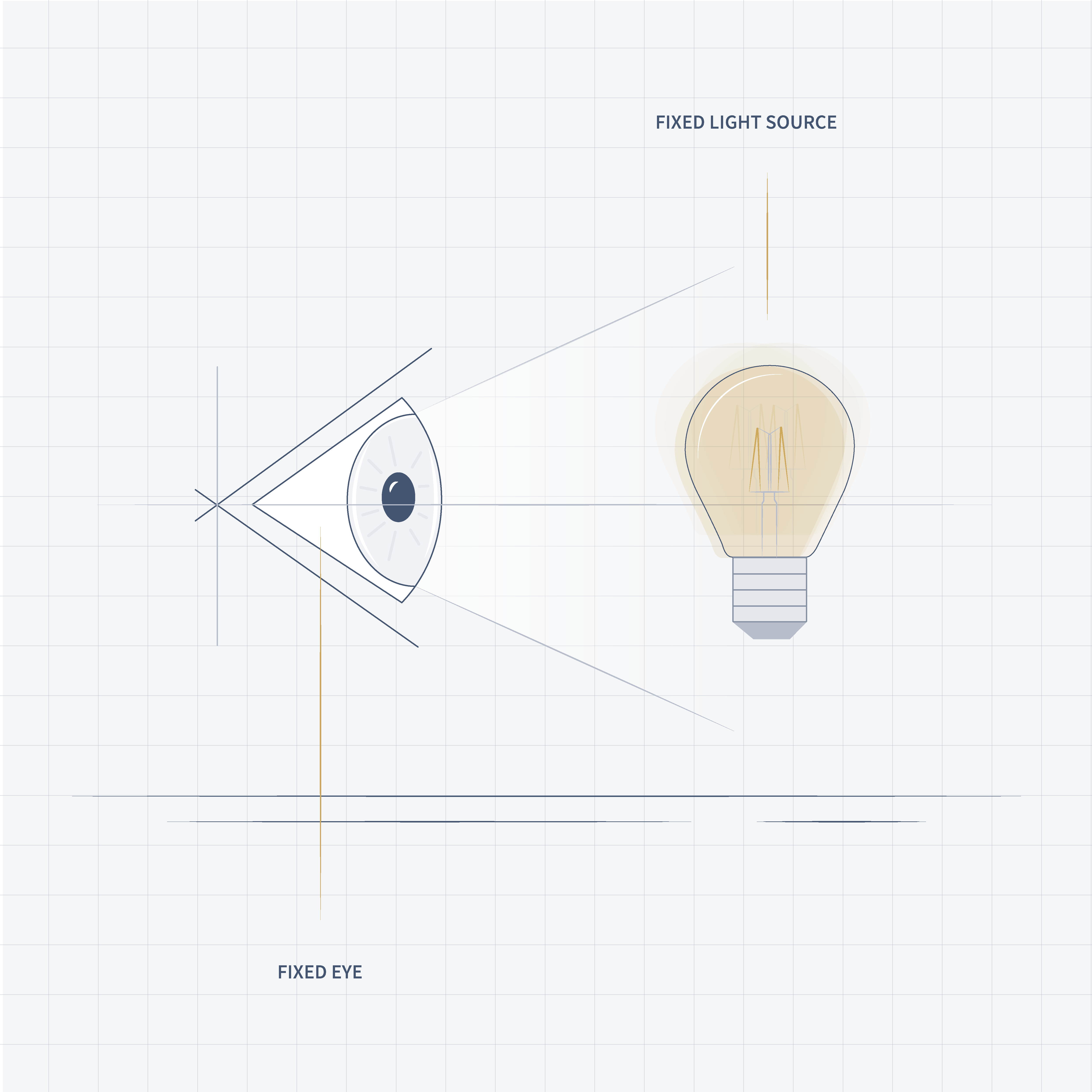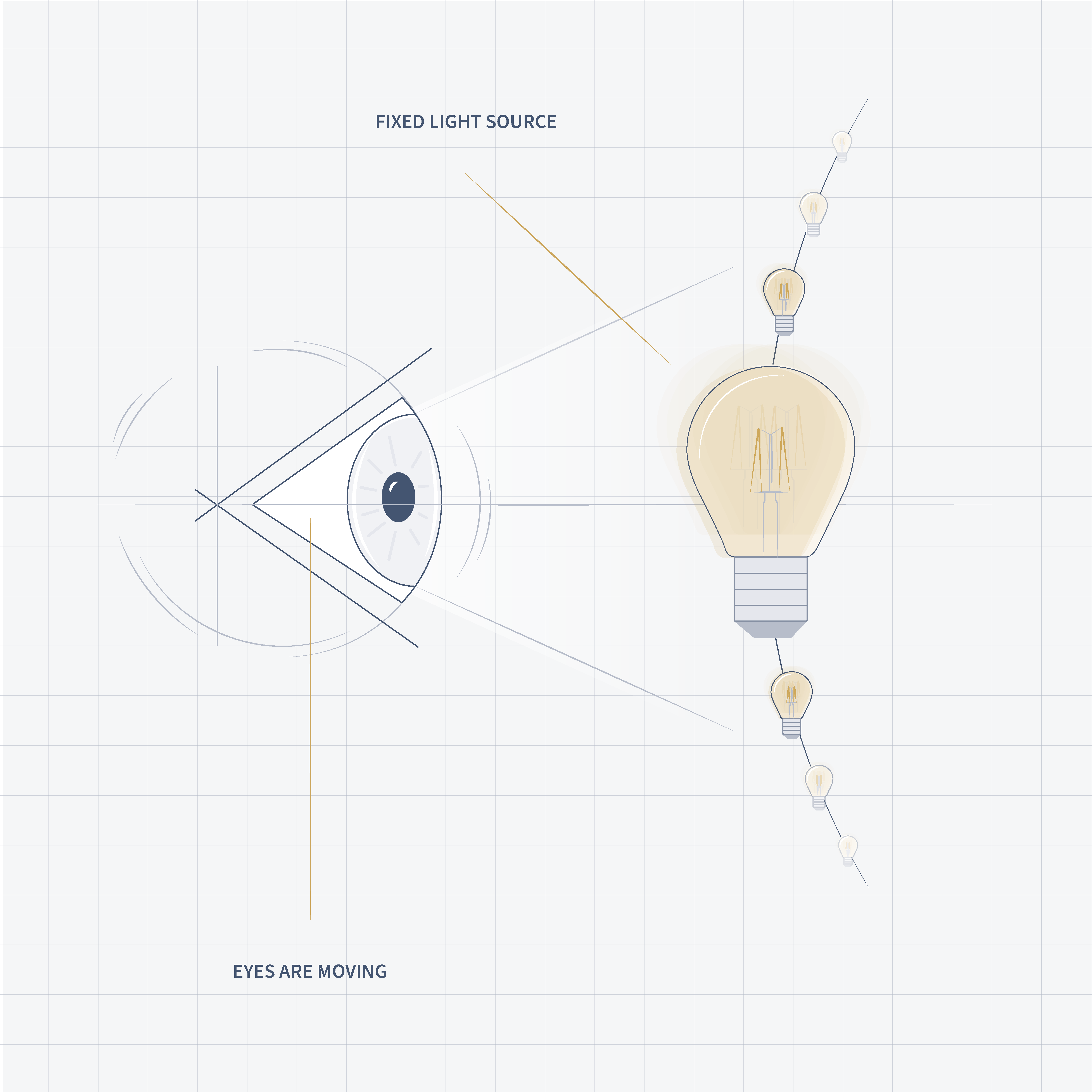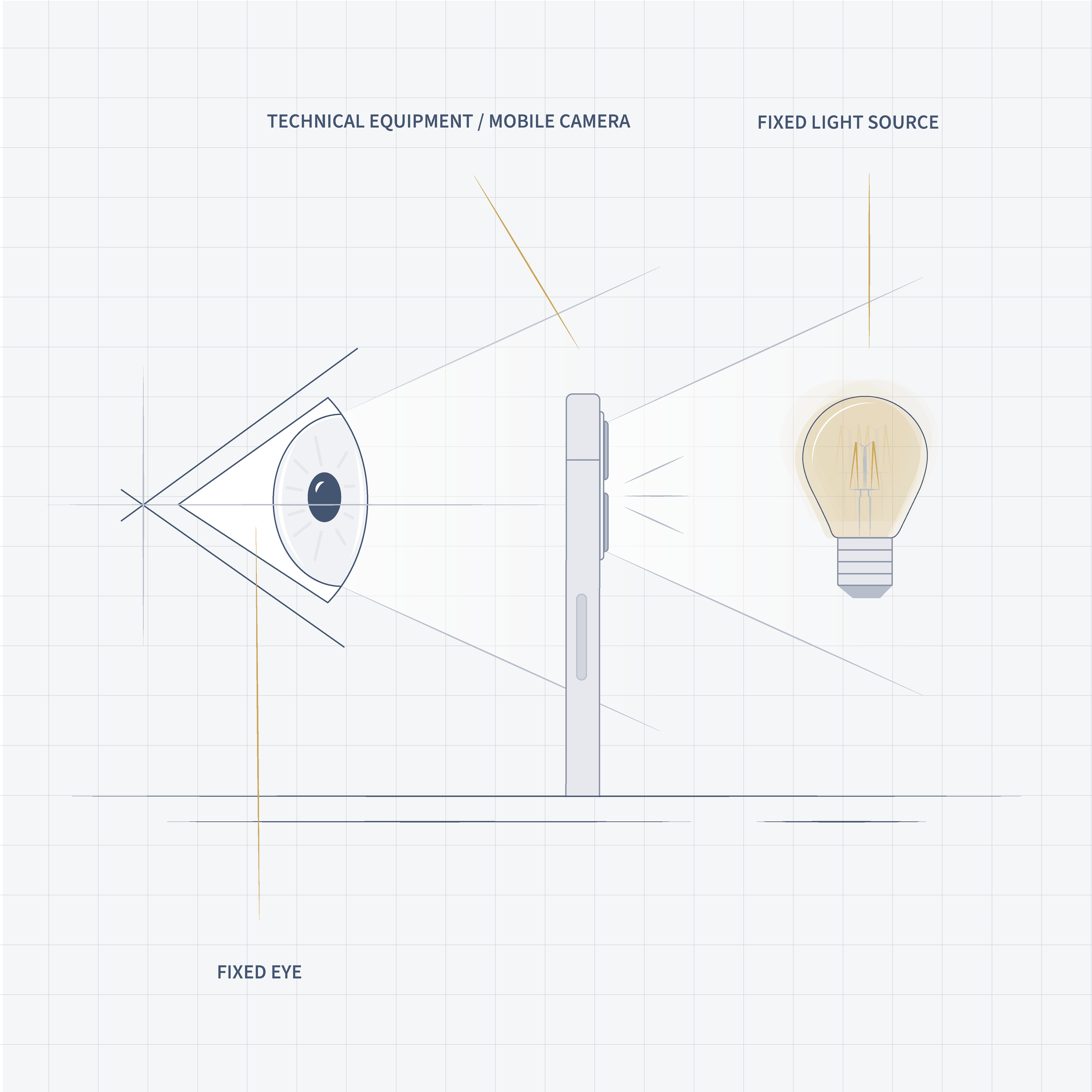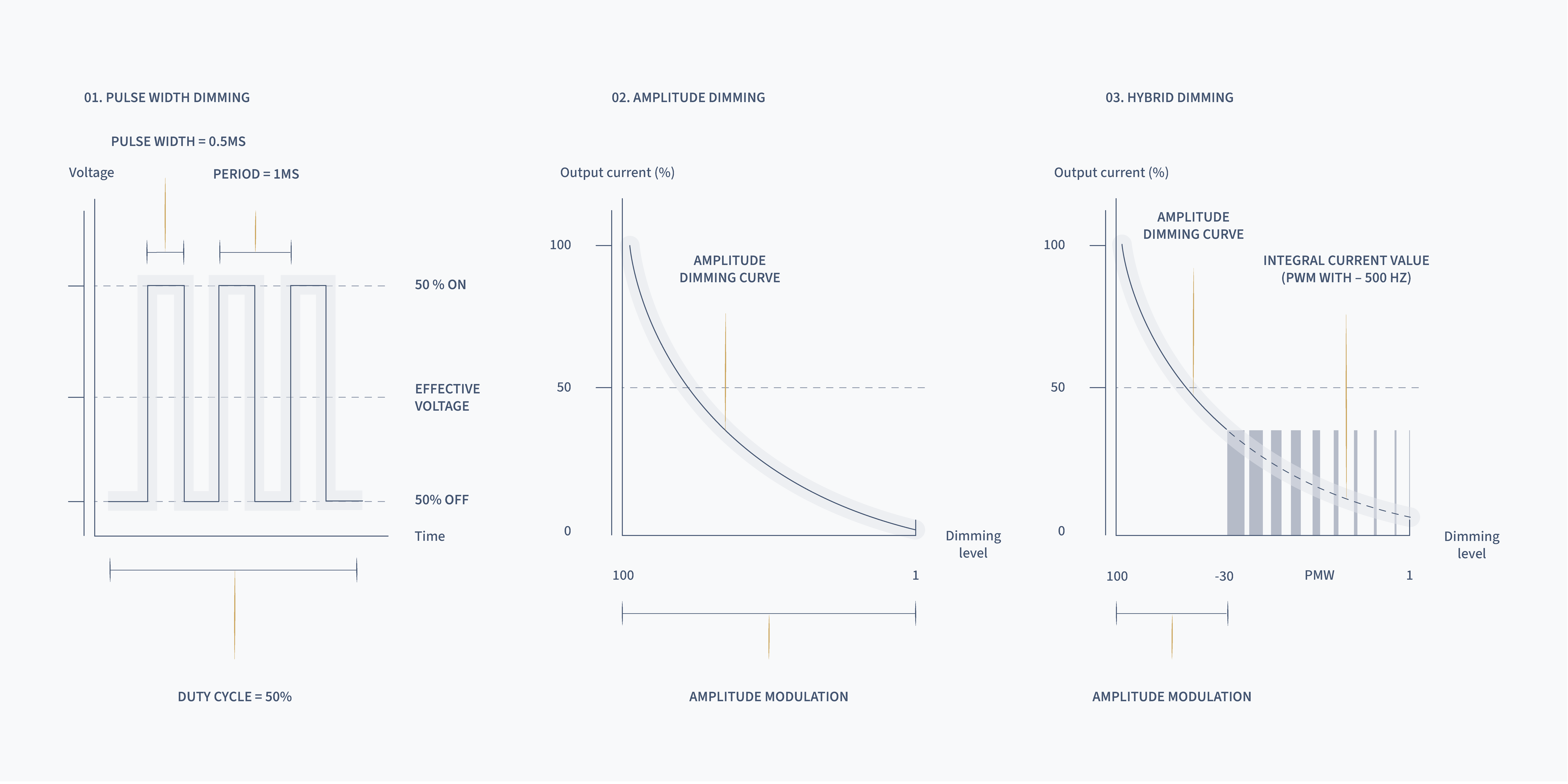Flicker and light modulation
The term flicker actually refers only to the variations in luminous flux that the eye can perceive, i.e. what we see. Other disturbances are not referred to as flicker but are part of the collective name Temporal Light Artifacts (TLA), which are temporary undesirable disturbance of the light output.

Frequency ranges
Visible flicker is perceived up to about 80 Hz. At frequencies of 80 Hz to 2 kHz, stroboscopic effects or phantom array effects may occur. At even higher frequencies, interference with technical equipment such as cameras and barcode scanners can occur.
Low frequency - visible flicker (~up to 80-100 Hz)
Both eye and light source are in fixed positions.
Low frequency - stroboscopic effects (80 Hz-2 kHz)
An illuminated moving object, gaze fixed.
Low frequency - Phantom Array Effect (80 Hz-2 kHz)
The eye moves over a fixed light source.
High frequency (>2 kHz)
Interference with other technical equipment, cameras or barcode scanners.
Impact of the driver
The driver has a major impact on the quality of light because it controls and regulates the current supplied to the LED. The light output of an LED depends on the operating current. Even small and short deviations from the desired operating current result directly in an altered light output. These unwanted variations or deviations from the desired operating current are referred to as light ripple.
The terms Short-Term Perceptibility of Light Modulation (PstLM) and Stroboscopic Effect Visibility Measure (SVM) include ripple, waveform and frequency. PstLM and SVM values are therefore a more accurate description of perceived flicker and TLA, respectively.
LED dimming
There are three main control technologies used in drivers intended for dimming in professional environments. These drivers are controlled via analogue 1-10V, phase pulse, or digital (e.g. DALI). This is done via separate control wires. The choice of control method itself has no impact on flicker or TLA. The decisive factor is the control method chosen for the driver.
- Pulse-width Modulation (PWM) means powering the LEDs with a modulated fixed operating current. The frequency may vary depending on the choice of driver.
- Constant Current Reduction (CCR)/Amplitude Modulation (AM) means that the current to the LEDs is adjusted down, thus lowering the light output.
- Hybrid dimming is a technology that combines the above systems. At higher luminous fluxes, AM technology is used and at low luminous fluxes (< ~35%) the driver automatically switches to PWM technology.
Limit values and measurement methods
On 1 September 2021, the EU Ecodesign Regulation 2019/2020 was implemented. It specifies limits for visible flicker (PstLM) and stroboscopic effect (SVM). Note that limits currently only apply to mains powered LED light sources, i.e. retro-fit or AC modules. Luminaires with a separate driver connected to one or more LED modules, the most common solution, are not covered by the requirements.
- Visible flicker — Measured in the frequency range 0-80 Hz. Stated as PstLM. PstLM is an abbreviation of Short-Term Perceptibility of Light Modulation. According to the Ecodesign Regulation, the maximum allowed level for PstLM is 1.0.
- Stroboscopic effect — Measured in the frequency range 80 Hz-2 kHz. Stated as SVM. SVM is an abbreviation of Stroboscopic Visibility Measure. According to the Ecodesign Regulation, the maximum allowed level of SVM is 0.4.
- Phantom array — There is currently no proposed measurement method but work is ongoing.
Read more about flicker and TLA on the Swedish Lighting Industry website: belysningsbranschen.se




